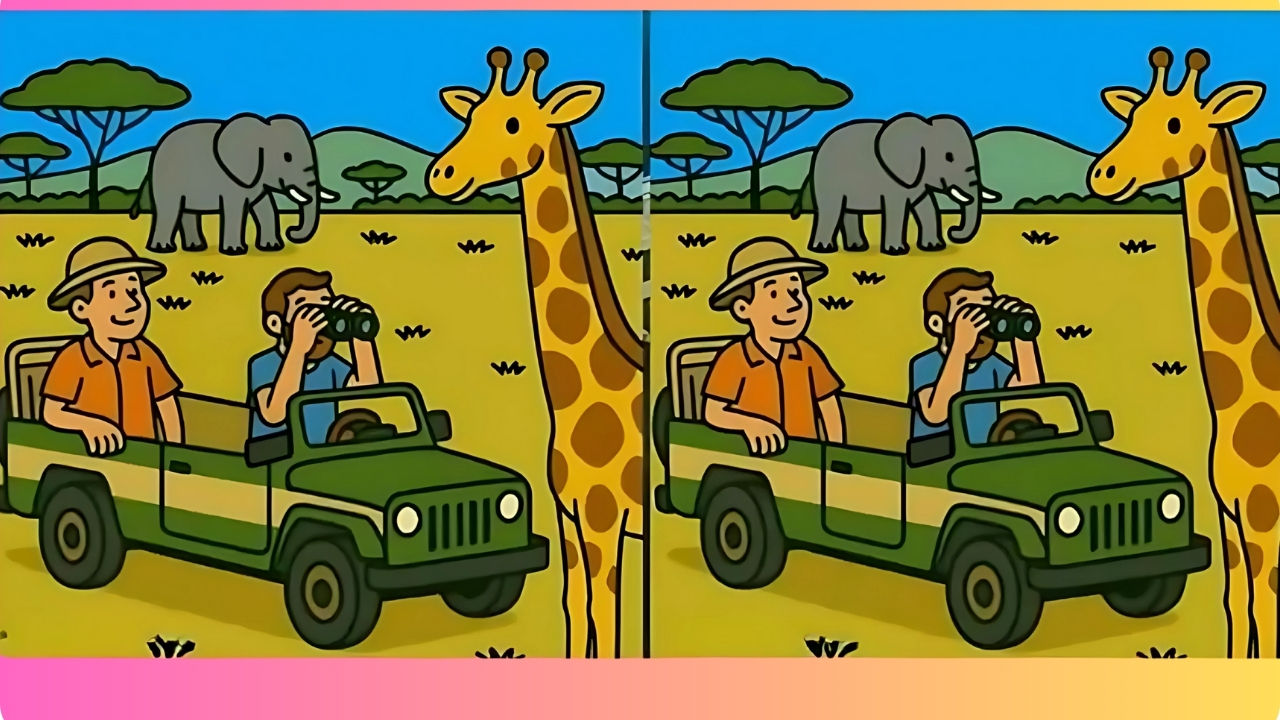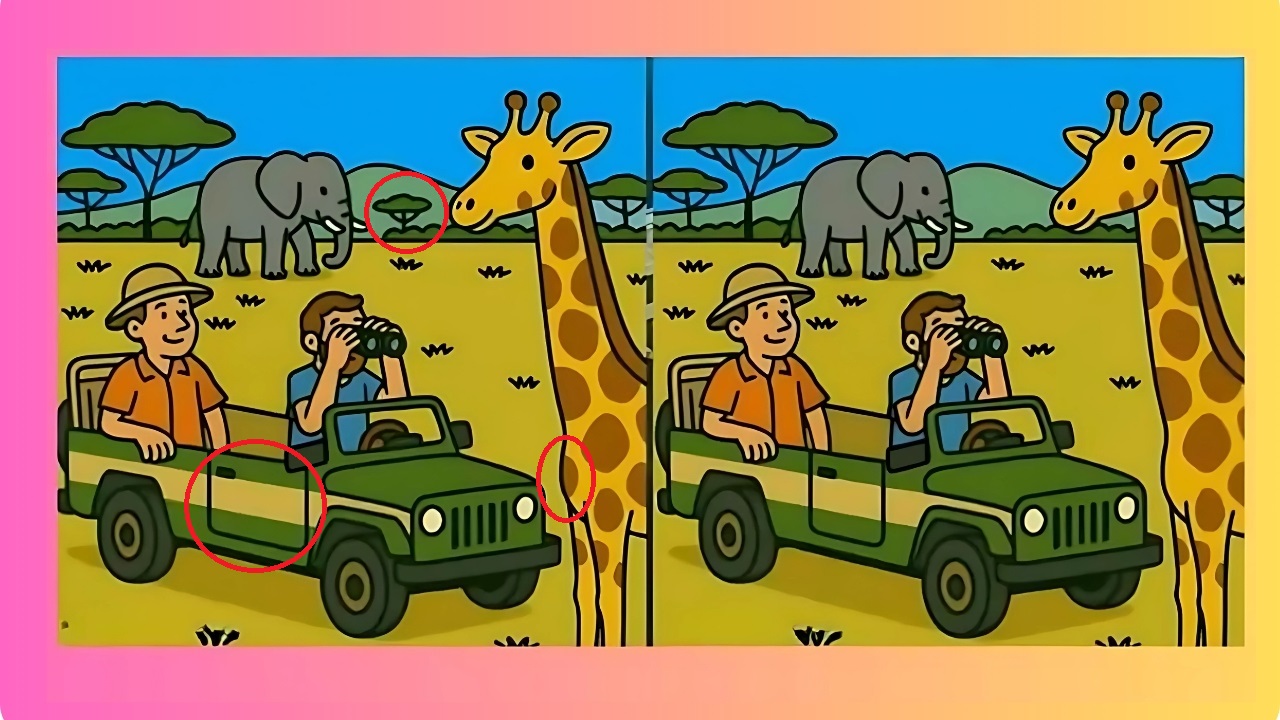Jungle Quest Optical Illusions: The dense canopy of a tropical jungle creates one of nature’s most complex visual environments. Within this intricate tapestry of leaves, shadows, and dappled sunlight, our minds encounter fascinating challenges that reveal the remarkable workings of human visual perception.
Understanding how jungle-themed optical illusions operate opens a window into the sophisticated mechanisms our brains use to interpret the world around us.
The Science Behind Visual Perception in Complex Environments
When we examine jungle scenes, whether real or illustrated, our visual system engages in an intricate dance of pattern recognition, depth perception, and contextual interpretation. The human brain processes visual information through multiple pathways, each contributing to our overall understanding of what we observe.
This complex system evolved over millions of years to help our ancestors navigate challenging environments, including dense forests where the ability to quickly identify hidden threats or opportunities meant the difference between survival and danger.

The visual cortex, located in the back portion of our brain, contains specialized cells that respond to specific features like edges, movements, and contrasts. When these cells encounter the complex patterns typical of jungle environments, they work together to create our conscious visual experience.
However, this system can be tricked when presented with carefully crafted images that exploit the shortcuts and assumptions our brains make during visual processing.
Understanding the Three Types of Hidden Twists in Jungle Illusions
The most effective jungle-themed optical illusions typically incorporate three distinct types of hidden elements, each targeting different aspects of our visual processing system. Learning to recognize these categories helps develop both our appreciation for the artistry involved and our skill at quickly identifying concealed images.
The first type involves figure-ground reversals, where images can be perceived in multiple ways depending on which elements we interpret as the primary subject versus the background.
In jungle settings, this might manifest as tree branches that simultaneously form the outline of an animal, or leaf patterns that contain the silhouette of a human face. These illusions work because our brains constantly make decisions about which visual elements belong together and which serve as mere background detail.
The second category encompasses depth and perspective manipulations. Jungle environments naturally contain multiple layers of visual information, from foreground vegetation to distant tree canopies. Skilled illusion creators exploit this natural complexity by embedding images that only become apparent when viewed from specific perspectives or when our focus shifts between different depth planes.
These hidden elements might include animals camouflaged within the natural layering of forest elements, or geometric patterns that emerge only when we consider the relationships between objects at different distances.
The third type involves color and contrast variations that create hidden images through careful manipulation of brightness, hue, and saturation. In jungle environments, the interplay of sunlight and shadow creates natural variations in color intensity that can be used to conceal secondary images
. These illusions often require viewers to adjust their focus or viewing angle slightly, allowing hidden elements to emerge as our eyes adapt to different lighting conditions within the image.
The Psychology of Pattern Recognition in Natural Settings
Human beings possess an remarkable ability to identify meaningful patterns within complex visual environments. This skill, known as pattern recognition, represents one of our most sophisticated cognitive abilities. When applied to jungle-themed optical illusions, this capacity allows us to discover hidden images that would otherwise remain invisible to casual observation.
Our pattern recognition system operates through both bottom-up and top-down processing mechanisms. Bottom-up processing begins with basic visual features like lines, curves, and color boundaries, gradually building these elements into more complex recognizable shapes. Top-down processing works in the opposite direction, using our existing knowledge and expectations to guide our interpretation of visual information.
In jungle illusions, both mechanisms work together, sometimes competing with each other to create the surprising revelations that make these images so compelling.
The speed at which we can identify hidden elements depends largely on our familiarity with both the concealment techniques being used and the types of objects commonly hidden within such images.
Experienced puzzle solvers develop mental strategies that allow them to systematically scan images, looking for telltale signs of concealed elements. These strategies include focusing on boundary areas where different visual elements meet, scanning for symmetrical patterns that might indicate artificial construction, and temporarily defocusing their vision to allow larger patterns to emerge.
Developing Your Visual Analysis Skills
Becoming proficient at uncovering hidden elements in jungle-themed optical illusions requires developing specific visual analysis techniques. Like any skill, this ability improves with practice and conscious attention to the methods that prove most effective.
One fundamental technique involves systematic scanning patterns. Rather than allowing your eyes to wander randomly across an image, develop the habit of examining visual information in organized sequences. Start by scanning horizontally across the image in strips, paying attention to any irregularities in pattern or texture. Follow this with vertical scanning, then diagonal sweeps from corner to corner. This methodical approach ensures that you examine all portions of the image with equal attention.
Another crucial skill involves learning to shift your visual focus between different levels of detail. Sometimes hidden elements become apparent only when you step back mentally from the fine details and consider larger patterns and relationships.
Conversely, some concealed images require close examination of small areas where subtle variations in color or texture create the desired effect. Practice alternating between these different viewing modes, allowing your attention to flow naturally between microscopic details and broad compositional elements.
Understanding the role of peripheral vision also enhances your ability to spot hidden elements. While our central vision provides sharp detail, our peripheral vision excels at detecting movement and noticing patterns that our focused attention might miss.
Try looking directly at one area of a jungle illusion while remaining aware of your peripheral visual field. Often, hidden elements will seem to “pop out” when approached through this indirect viewing method.
The Cultural and Artistic Heritage of Hidden Image Puzzles
The tradition of embedding hidden images within complex visual compositions extends back centuries across multiple cultures. Artists have long recognized the appeal of creating works that reward careful observation with unexpected discoveries. This artistic tradition finds particular expression in jungle-themed works, where the natural complexity of forest environments provides an ideal context for concealment techniques.
Indigenous artists from rainforest regions around the world have traditionally incorporated multiple layers of meaning into their visual representations of jungle environments.
These works often contain symbolic elements that are apparent only to viewers who understand the cultural context and visual conventions being employed. Modern optical illusion artists draw inspiration from these traditional approaches while adding contemporary techniques developed through scientific understanding of visual perception.
The development of digital art tools has dramatically expanded the possibilities for creating sophisticated hidden image puzzles. Artists can now layer multiple transparent elements, adjust color relationships with precise control, and test their creations to ensure optimal effectiveness.
This technological advancement has led to increasingly complex and rewarding jungle-themed optical illusions that challenge even experienced puzzle solvers.
Cognitive Benefits of Regular Practice with Visual Puzzles
Engaging regularly with optical illusions and hidden image puzzles provides measurable benefits for cognitive function and visual processing abilities. Research in neuroplasticity demonstrates that challenging our visual system with complex puzzles strengthens neural pathways involved in pattern recognition, spatial reasoning, and visual attention.
Regular practice with jungle-themed optical illusions specifically enhances several important cognitive abilities. Visual attention improves as we learn to maintain focus while scanning for hidden elements. Spatial reasoning develops through practice with depth-perception challenges and perspective shifts.
Pattern recognition becomes more sophisticated as we encounter diverse concealment techniques and learn to identify the visual cues that indicate hidden content.
These cognitive benefits extend beyond puzzle-solving into practical applications. Enhanced visual attention helps in professional contexts requiring careful observation, from medical diagnosis to quality control inspection.
Improved pattern recognition assists in learning new skills, understanding complex diagrams, and navigating unfamiliar environments. The patience and systematic approach developed through regular puzzle practice also contribute to general problem-solving abilities.
Advanced Techniques for Challenging Illusions
As your skills develop, you may encounter jungle-themed optical illusions that resist standard analysis techniques. These advanced puzzles often incorporate multiple concealment methods simultaneously, requiring more sophisticated approaches to uncover their hidden elements.
One advanced technique involves understanding the role of color temperature in creating hidden images. Jungle environments naturally contain both warm and cool color areas, created by variations in sunlight exposure and shadow depth.
Skilled illusion creators exploit these natural color relationships by embedding images that become visible only when viewers focus on specific color ranges while filtering out others.
Another sophisticated approach involves recognizing intentional visual noise and distraction elements. Advanced jungle illusions often include visual elements specifically designed to misdirect attention away from hidden content. Learning to identify these distraction techniques allows you to focus your analysis on areas more likely to contain concealed images.
Time management becomes crucial when working with complex illusions under time constraints. Develop strategies for quickly assessing which areas of an image are most likely to reward detailed examination. Look for regions where patterns break down or become irregular, areas where color relationships seem slightly artificial, and zones where multiple visual elements create natural boundary conditions suitable for hiding secondary images.
Creating Your Own Jungle-Themed Visual Challenges
Understanding the principles behind effective optical illusions enables you to create your own jungle-themed visual challenges. This creative process deepens your appreciation for the artistry involved while reinforcing your analytical skills through reverse application of concealment techniques.
Begin by selecting or creating a base jungle image with sufficient complexity to support hidden elements without appearing obviously artificial. The most effective base images contain natural variations in color, texture, and brightness that provide opportunities for seamless integration of concealed content. Consider the overall composition carefully, ensuring that hidden elements enhance rather than detract from the primary visual appeal.
Optical Illusions Answer

When embedding hidden images, work with multiple layers of transparency and carefully adjust color relationships to achieve the desired level of concealment. The goal is creating images that are challenging but not impossible to find, rewarding persistent observation without causing frustration. Test your creations with others to gauge their effectiveness and make adjustments based on feedback.
The process of creating jungle-themed optical illusions requires patience, artistic skill, and deep understanding of visual perception principles. Each successful creation represents a synthesis of scientific knowledge about how our brains process visual information and artistic intuition about what will engage and challenge viewers effectively.
Through regular engagement with jungle-themed optical illusions, whether as solver or creator, we develop not only our visual analysis abilities but also our appreciation for the remarkable complexity of human perception.
These challenging puzzles remind us that the act of seeing involves far more than passive reception of visual information, revealing instead the active, constructive process through which our minds create understanding from the complex patterns of light and shadow that surround us in the natural world.